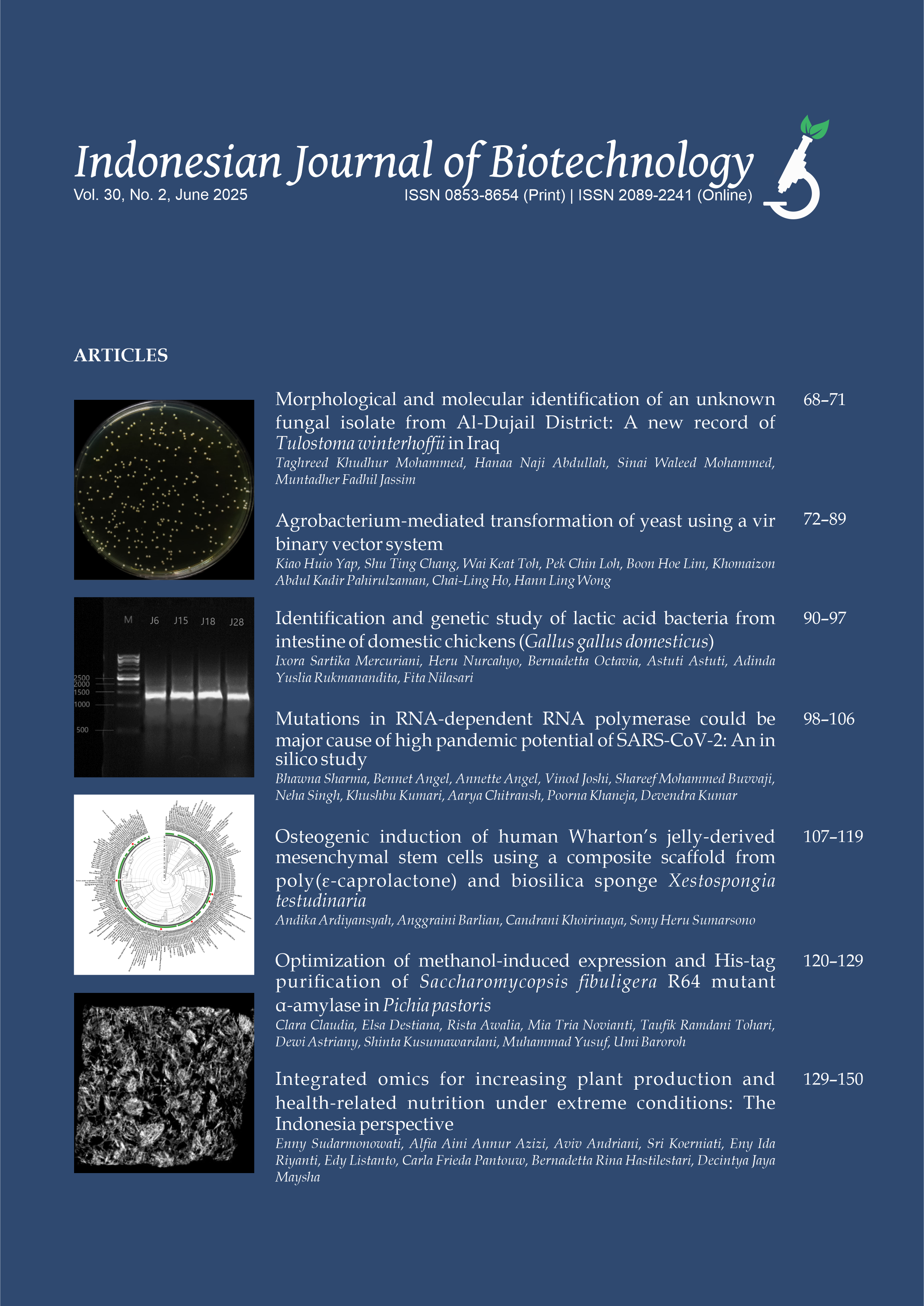Genotyping of Rotavirus by Using RT-PCR Methods
Hera Nirwati(1*), Tri Wibawa(2), Abu Tholib Aman(3), Yati Soenarto(4)
(1) Department of Microbiology, Faculty of Medicine, Universitas Gadjah Mada, Yogyakarta
(2) Department of Microbiology, Faculty of Medicine, Universitas Gadjah Mada, Yogyakarta
(3) Department of Microbiology, Faculty of Medicine, Universitas Gadjah Mada, Yogyakarta
(4) Departments of Pediatric, Faculty of Medicine, Universitas Gadjah Mada, Yogyakarta Department of Pediatric, Dr.Sardjito General Hospital, Yogyakarta
(*) Corresponding Author
Abstract
There is a great diversity of rotavirus genotypes circulating worldwide, with dominant genotypes changing from year to year. Rotavirus genotyping was performed by using reverse transcription PCR with type-specifi c-primers. Since rotavirus is a RNA virus that has high mutation rate, there was a possibility of technical diffi culty in genotyping due to mutation in the primer binding sites. During Indonesian rotavirus surveillance study 2006-2009, it was reported that 17% of samples subjected for G type and 21% of samplessubjected for P type were untypeable. The objective of this study was to identify genotypes of the samples that were untypeable previously using RT-PCR based on the method described by Das et al. (1994) and Gentsch et al. (1992). There were 30 samples subjected to G type and 61 samples subjected to P type to be re-typed using method described by Gouvea et al. (1990) and Simmond et al. (2008) for G and P typing, respectively. By using another set of primer, the genotype of all samples was identifi ed. This study highlights the importance of a constant reconsideration of primer sequences employed for the molecular typing of rotaviruses. Key words: rotavirus, G typing, P typing
Keywords
Rotavirus; G typing; P typing
Full Text:
PDFArticle Metrics
Refbacks
- There are currently no refbacks.
Copyright (c) 2015 Indonesian Journal of Biotechnology









